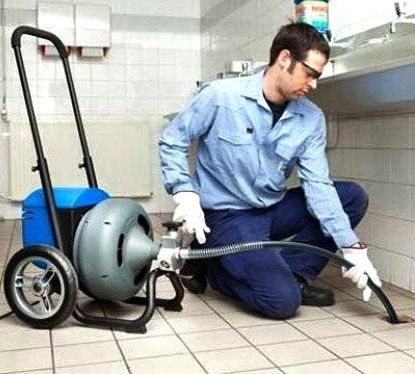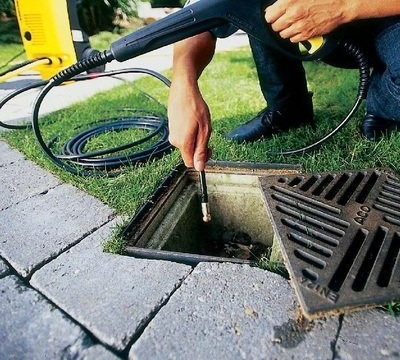Technology for cleaning storm sewers and an overview of preventive measures
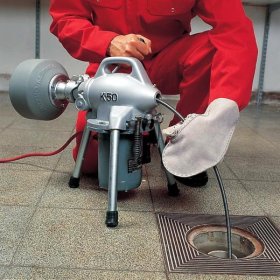
The arrangement of storm sewers in a summer cottage plays no less role than installing a septic tank or drilling a well. Uncontrolled rain and melt water can damage the home and surrounding objects, eroding the foundation and flooding the territory. When planning a system for the removal and installation of equipment, it should be remembered that sooner or later a storm sewer needs to be cleaned, so you need to know the composition of the system and learn the simple technology for removing blockages.
Content
Content
Types of hydraulic systems
The division into types depends on the location of the rain equipment. Three types of storm sewage can be distinguished, each of which is quite suitable for a suburban area:
- superficial;
- closed;
- mixed.
The easiest way is to lay a surface (or open) drainage system. It consists of a set of trays and pipes installed on the roof and walls of the building, as well as around the perimeter of the territory. All parts of the system are interconnected and installed at such an angle that water flows in the right direction. Having gone through the labyrinth of pipes and trays, the effluents enter the storage tank, septic tank, ditch or pond. Due to the fact that almost all parts are in the field of view, the decorative design of equipment is of great importance. In the construction market, you can find kits of various shapes, colors and even styles. The material of manufacture became stronger and more elastic; heavy metal structures were replaced by parts from light and inexpensive polypropylene.
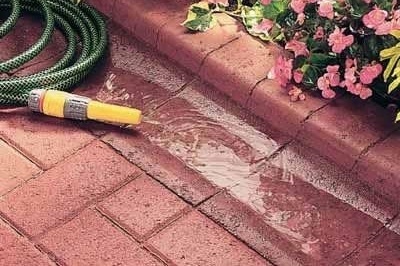
Part of the rain sewage system in the country is a drainage system that directs water towards the septic tank. One example of a drainage device is trays installed along the edges of the sidewalk
A closed system is more difficult to install, in addition, before installing it, you must carefully calculate the number of components, the length of pipes and gutters. For calculations, such parameters as the catchment area, average rainfall, and even the speed of runoff are important. From storm water inlets and gutters, water enters sewer pipeslocated underground, then to the collector, and finally to the final destination - drainage system, a pond or a specially dug ditch.Sometimes pumping equipment is installed for the proper movement of wastewater.
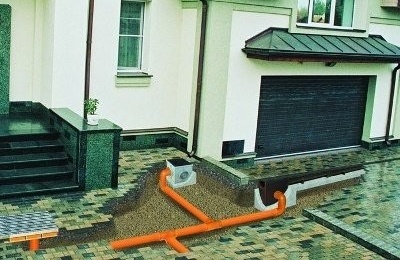
The calculation of the components of a closed storm sewer should be carried out at the preparatory stage, before the start of improvement of the local area, for example, before laying paving slabs
A mixed stormwater system is chosen when they want to save on installing a closed sewage system. For small summer cottages, a complex closed drainage system is not needed, enough equipment serving the house and part of the territory around it. As a rule, these are water intake points, gutters, drainpipes and storage tanks - classic outdoor components.
For more information about the device of storm showers, see the video:
Methods and features of professional cleaning
Whatever type rain sewer not chosen, over time there are troubles associated with the formation of traffic jams and blockages. Dirt, dry branches, fallen leaves and other debris together with water fall into the pipes and accumulate until an impenetrable blockage forms. The system is broken, intervention is required. Many summer residents, not having free time or working skills, turn to special organizations.
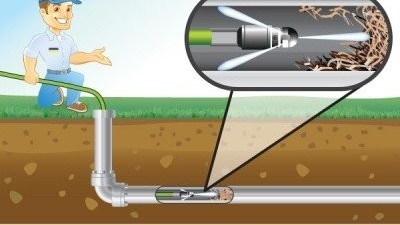
Hose with nozzles that spray with water jets in different directions, great for flushing and removing blockages in pipes located underground
What can professionals offer? Usually they choose one of 4 cleaning methods:
- hydrodynamic - by a stream of water under powerful pressure;
- chemical - using reagents that corrode plugs;
- thermal - steam or water heated to a certain temperature;
- mechanical - manual removal of garbage using a primitive tool.
Unlike domestic sewage, rainwater does not let in oily drains, therefore, often a mechanical or hydraulic way to eliminate blockages, which can be done independently, is enough. If nevertheless there is a need to contact specialists, you should prepare a site for the operation of heavy equipment and release the entrances to it and the place of blockage.
Most often, storm storms require cleaning or repair during melting snow or prolonged rains. The greater the flow of water rushing through pipes and gutters, the greater the likelihood of clogging. Methods for cleaning open and closed sewers differ in some aspects.
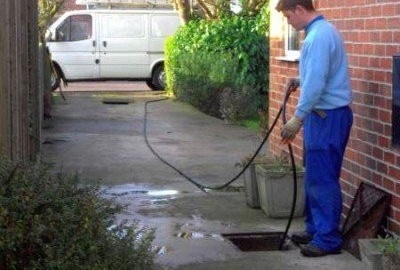
Many storm water cleaning works offered by professional companies can be done independently by studying the layout of pipes and using a special tool
Removal of blockages in surface systems
The first unpleasant signal about a blockage is stagnation of water in the upper troughs and its discharge in places not intended for this. Patency testing should begin from the roof, carefully removing accumulated debris from each gutter. Next, go to the funnels that connect the gutters to the drainpipes and direct the drains down. Almost all funnels, except the oldest ones, are equipped with a fine-mesh lattice, which plays the role of a filter, therefore it is here that a large accumulation of foliage or dirt is possible. If, nevertheless, the trash gets into the pipe, you can use the hydrodynamic method of cleaning, in other words, use a garden hose. Water under strong pressure hits the cork, destroys it and washes garbage out. All other dirt removal work is carried out mechanically.
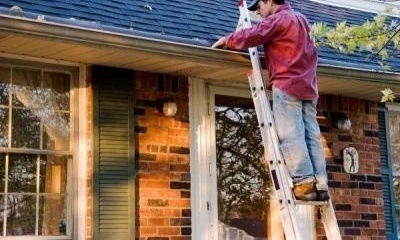
To reduce the amount of dirt and debris in storm pipes, it is necessary to clean the gutters located on the roof of the house as often as possible
There is a little trick to creating artificial blockages in external systems. For this, it is necessary to create a cascade of several lattice barriers along the route of water.To prevent the occurrence of traffic jams, check points should be cleaned from time to time, and then the system will work smoothly and clearly, like a clock.
Cleaning Closed Storm Drain
It is much more difficult to clean pipes underground that are part of a closed and mixed sewage system. The main method of solving the problem, the safest and most affordable, is hydraulic. Dense plugs from accumulated sand and debris are broken, along with other foci of pollution that have not yet turned into blockages. After hydraulic cleaning, the system begins to function fully. The effectiveness of the cleaning work depends on the diameter of the sewer pipes. Most underground kits for summer cottages are equipped with products with a diameter of 20 cm. Such parameters are suitable for periodic washing with a car wash for home use, while the water pressure is 350 bar. Experts recommend universal devices manufactured by Karcher, their power is usually enough to clean the country sewerage.
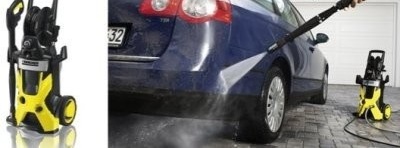
On average, Karcher household car washes have a maximum pressure of 130-140 bar, that is, they are suitable for washing weak blockages in pipes of medium diameter
If the suburban area is large, and the underground system is composed of pipes of large diameter, then only professional equipment can help. To make the process more efficient, water under pressure is supplied from both ends, first along the natural current, then towards it.
Blockage Prevention
To prevent the occurrence of critical situations, you should use a maximum of treatment elements and organize additional facilities (for example, inspection wells). Here is a short list of useful devices that you can install yourself:
- sand traps;
- filters for oil products (in the garage);
- absorption equipment;
- sedimentation tanks and separators;
- UV disinfection stations.
Consider three solutions to the problem of blockages, available to any summer resident.
Use of sand traps
This is one of the simplest and most affordable ways to free pipes from sand, thereby preventing the formation of plugs. The installation site for the sand trap is the beginning of the sewer pipe. The water coming from the drain pipe enters the tank from above, and flows through the holes in the side. The trick is that these holes are much higher than the bottom, so heavy particles of debris, including sand and small pebbles, remain trapped.
The material for the manufacture of sand traps, which can be found on sale, is durable plastic or polymer concrete. But nothing prevents you from making such a structure yourself, using a suitable container. For quick cleaning of the tank, it is equipped with a removable container with a handle.
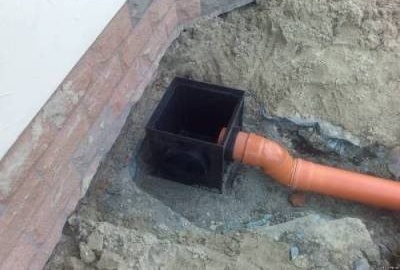
A universal device for collecting sand and garbage - a sand trap - is installed in places where rainwater is collected: under roofs, on sidewalks, platforms, parking lots
Straight pipe routing
The number and size of blockages is directly related to the correct laying of pipes. If their device is not thought out, and the system has incorrect slopes and many bends, then the occurrence of traffic jams is inevitable. When designing an underground pipe installation, attention should be paid to straightness, and the presence of bends and bends should be minimized.
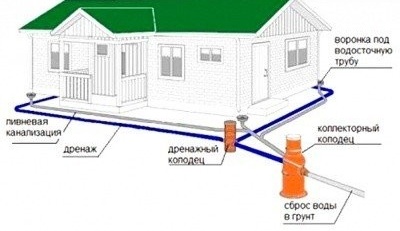
The more directly the storm sewer lines are laid and the more inspection wells there are, the less is the likelihood of blockages along the wastewater
Inspection wells
To ensure convenient maintenance of the most difficult places, compact manholes. In the event of a blockage, you will not have to dig out the pipes, it will be enough to open the hatch.Installation of a rain sewer system greatly facilitates the life of summer residents. Once installed hydrodynamic equipment, you can protect your home from water and learn how to rationally use storm and melt drains.
